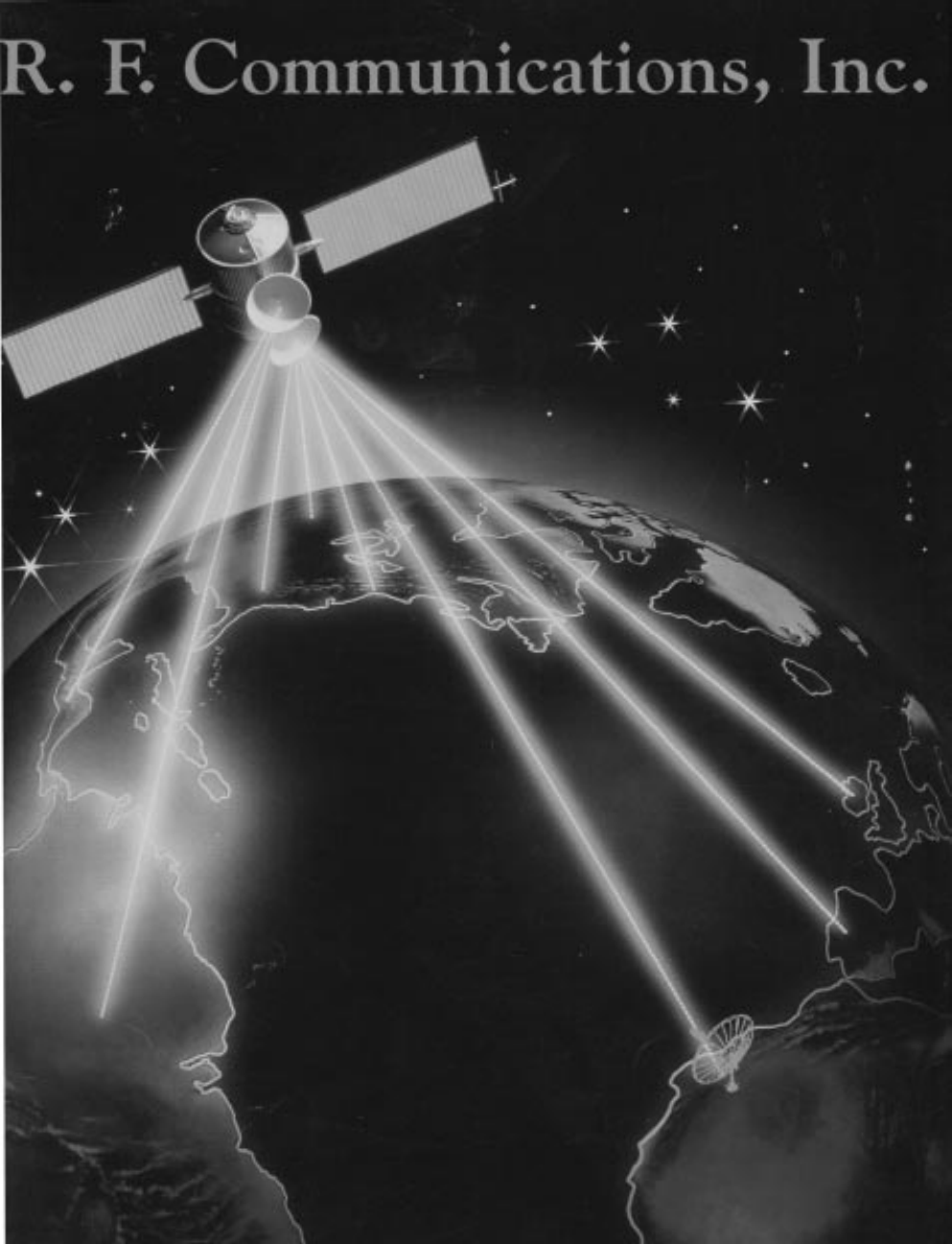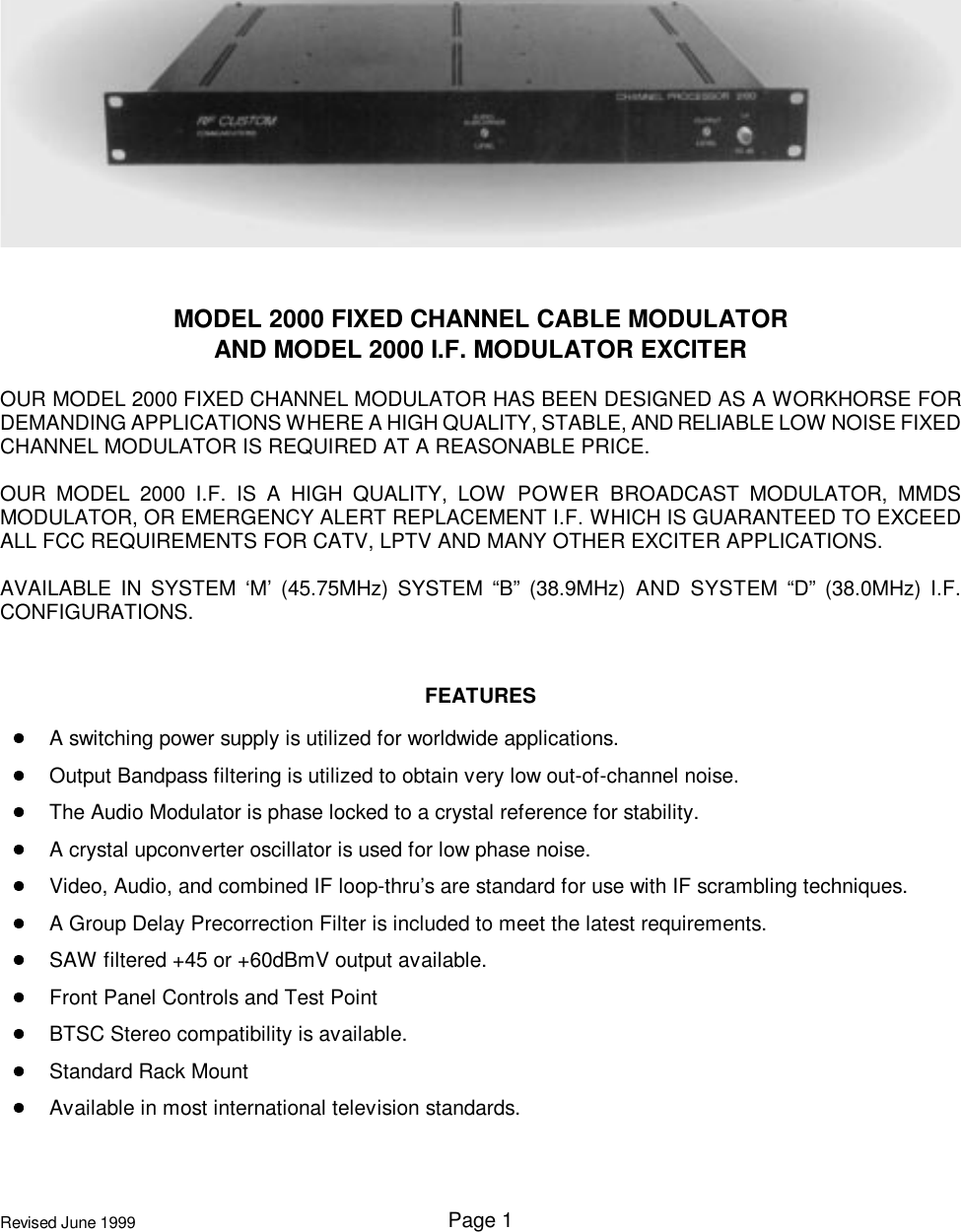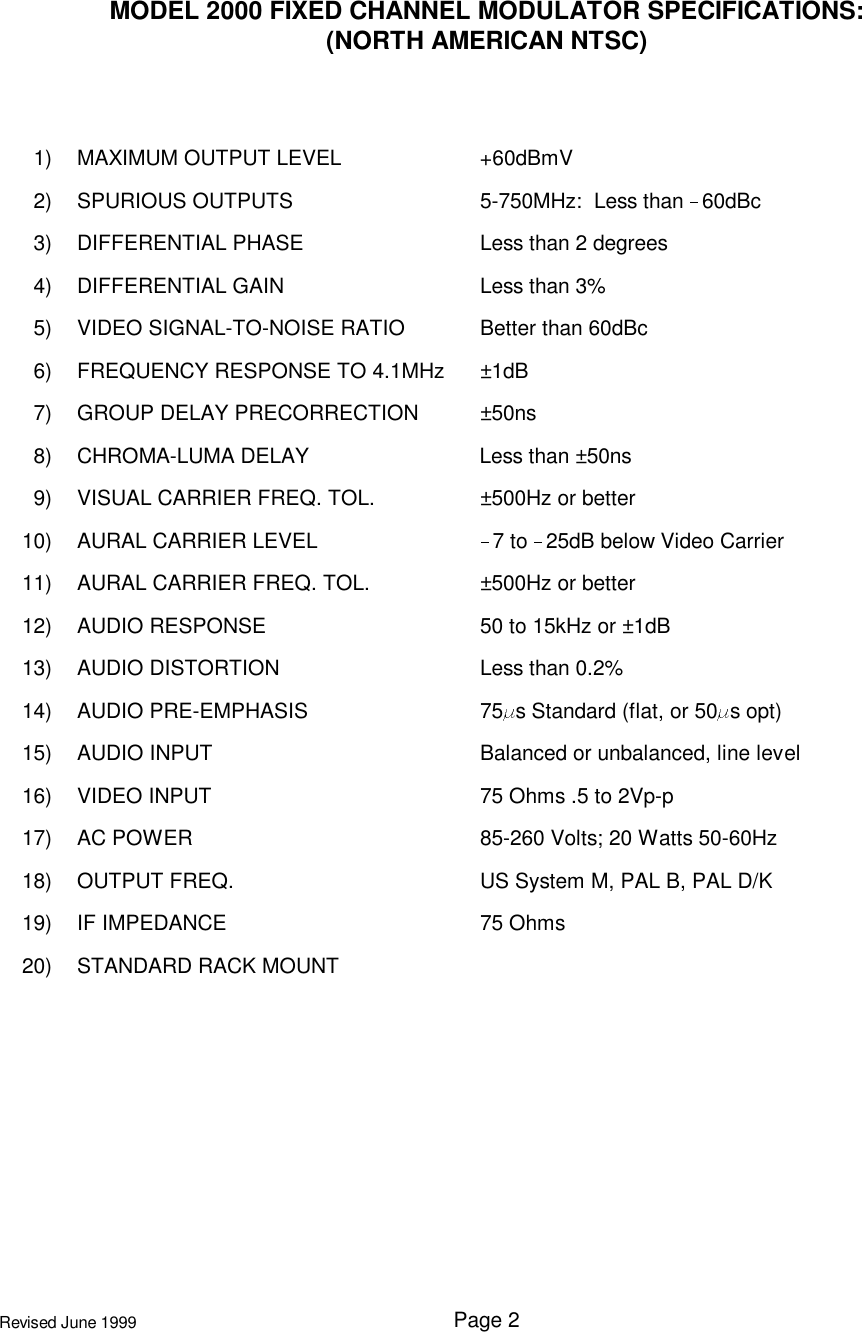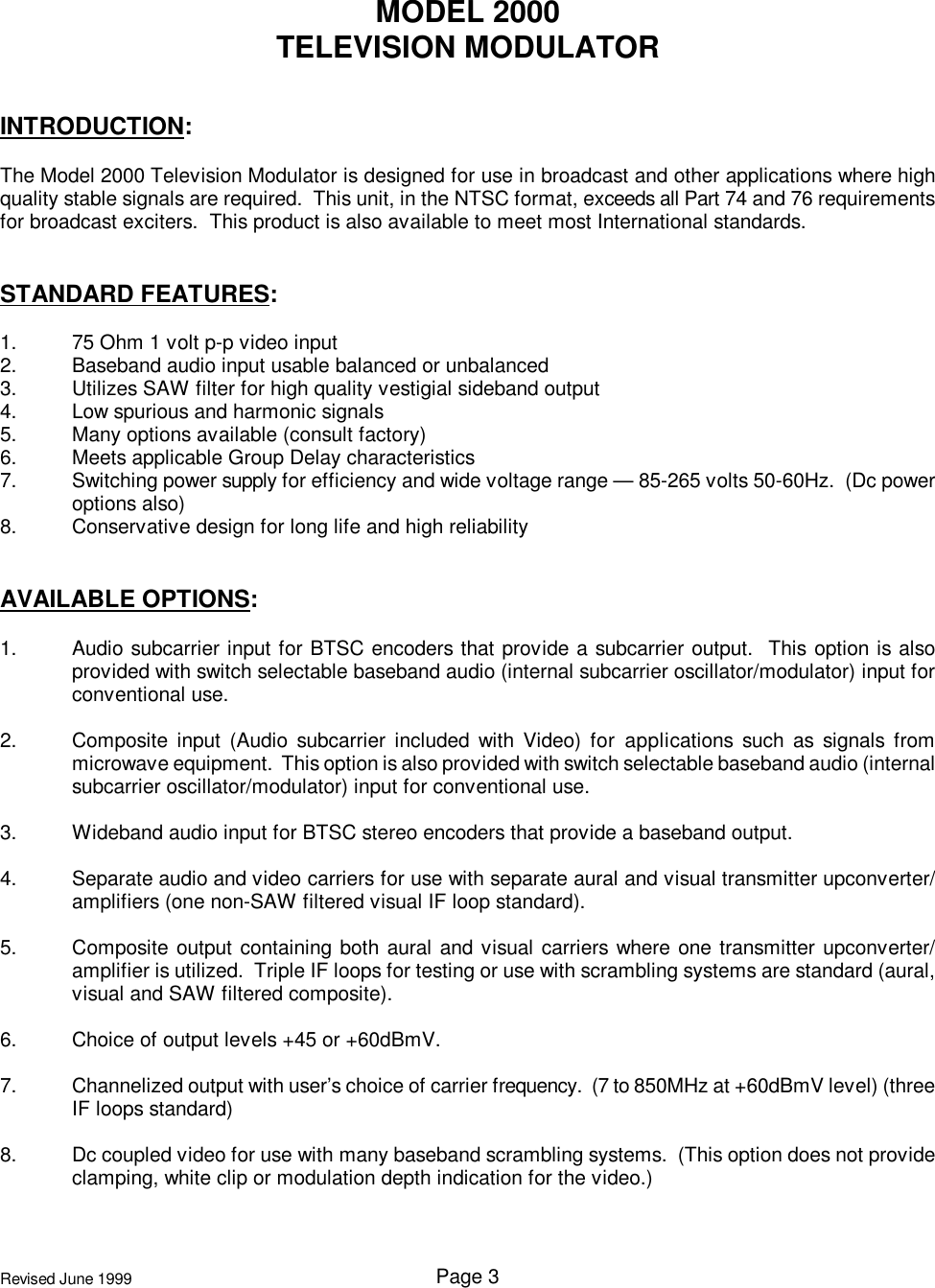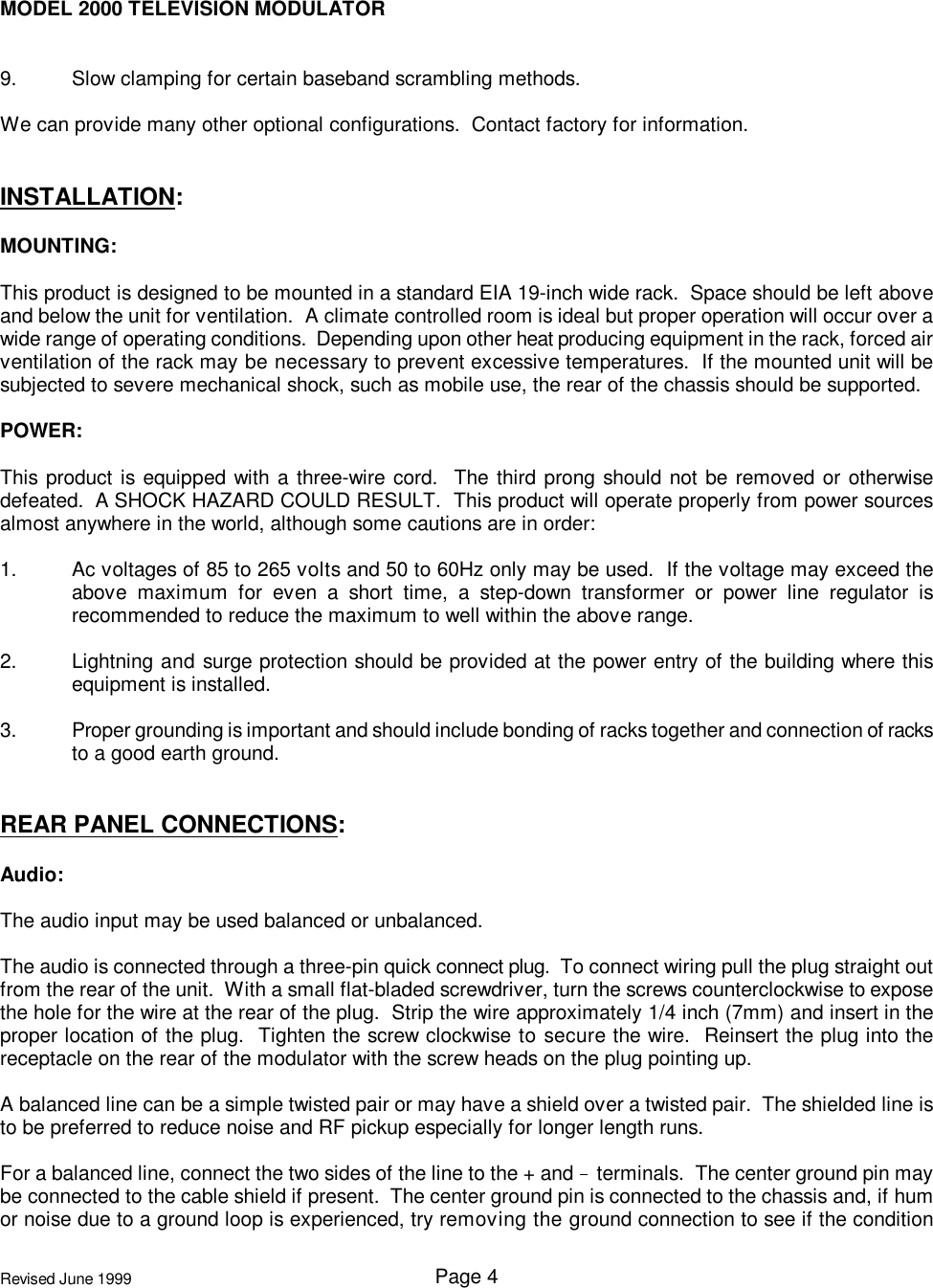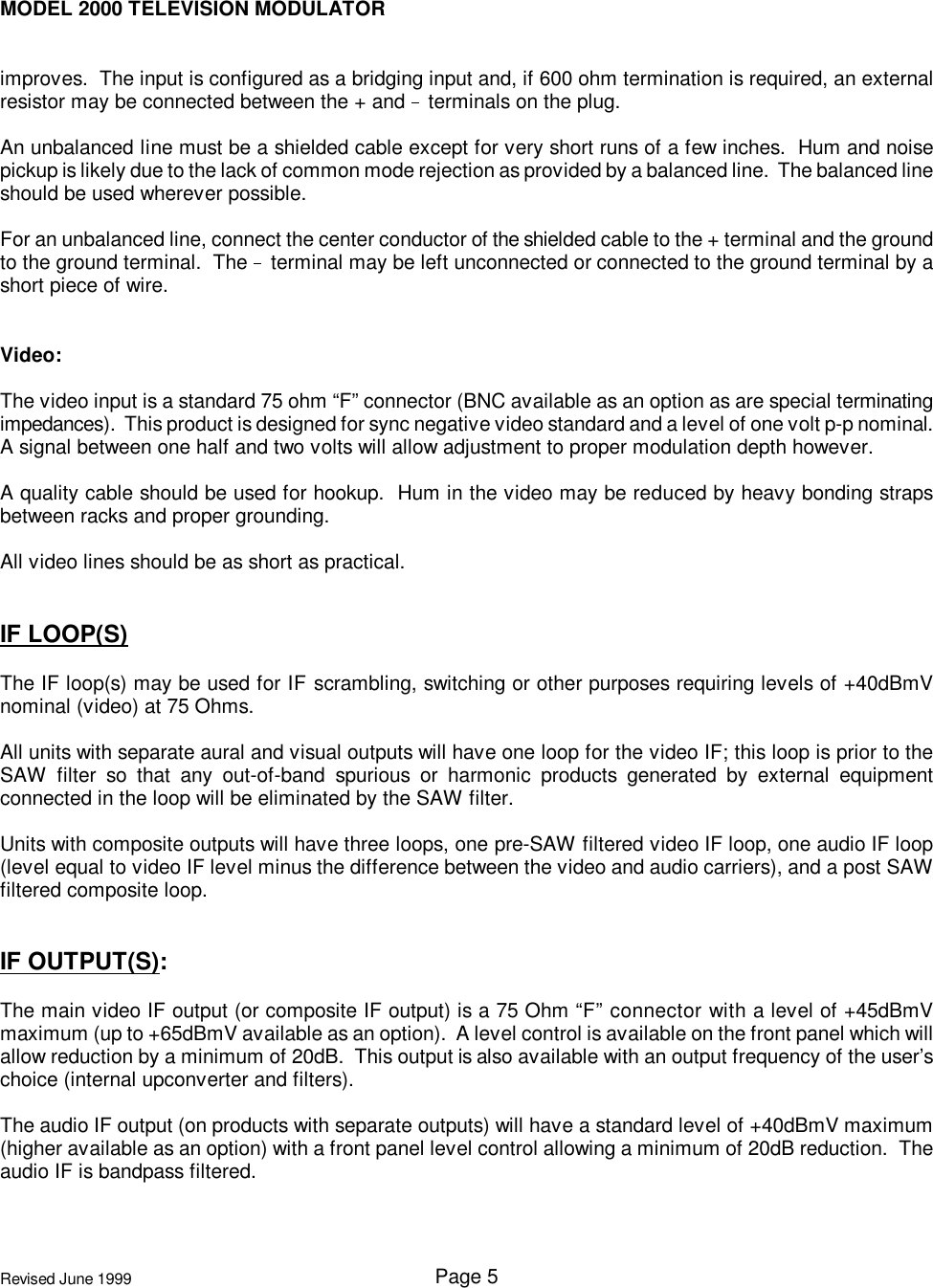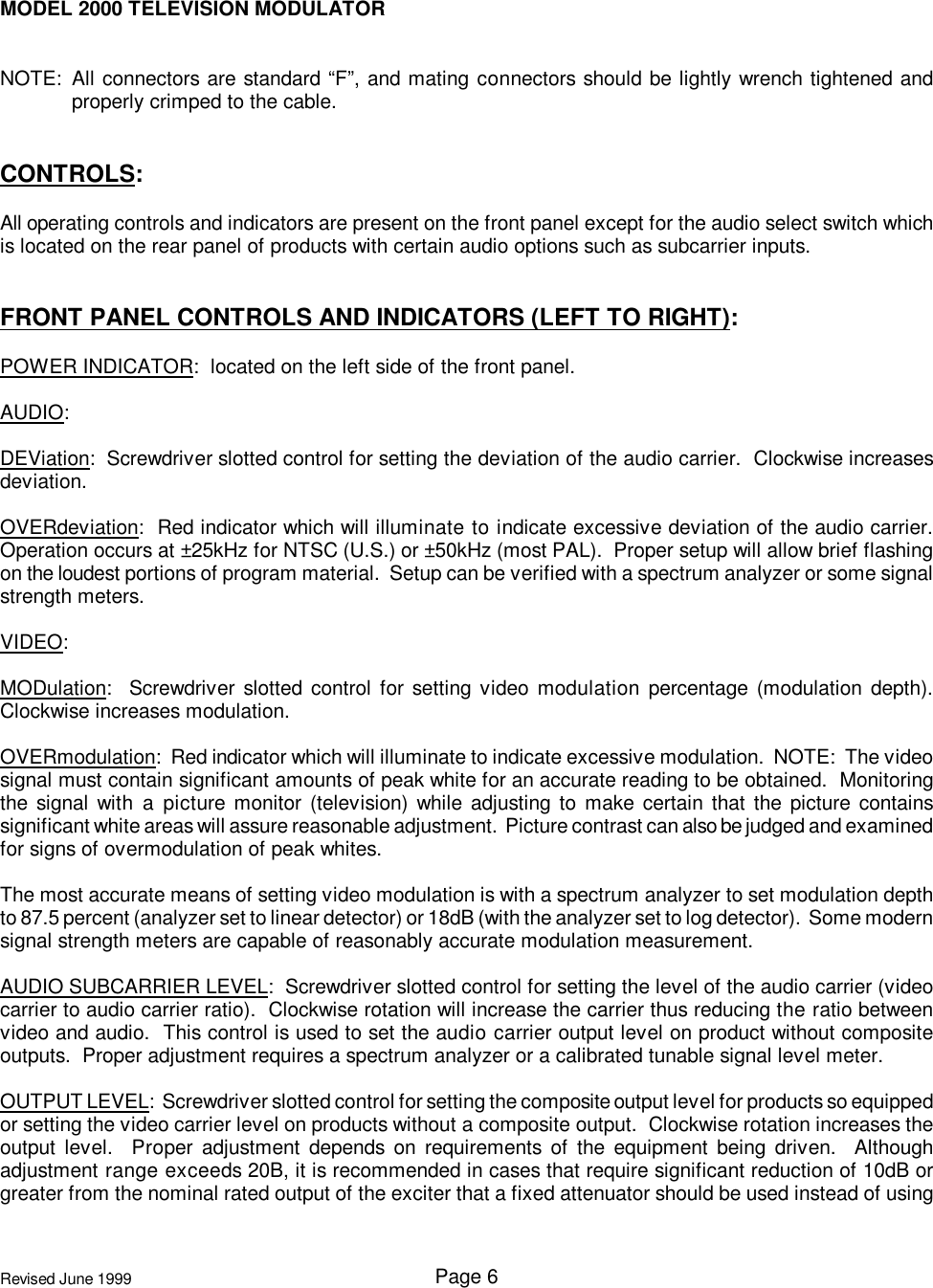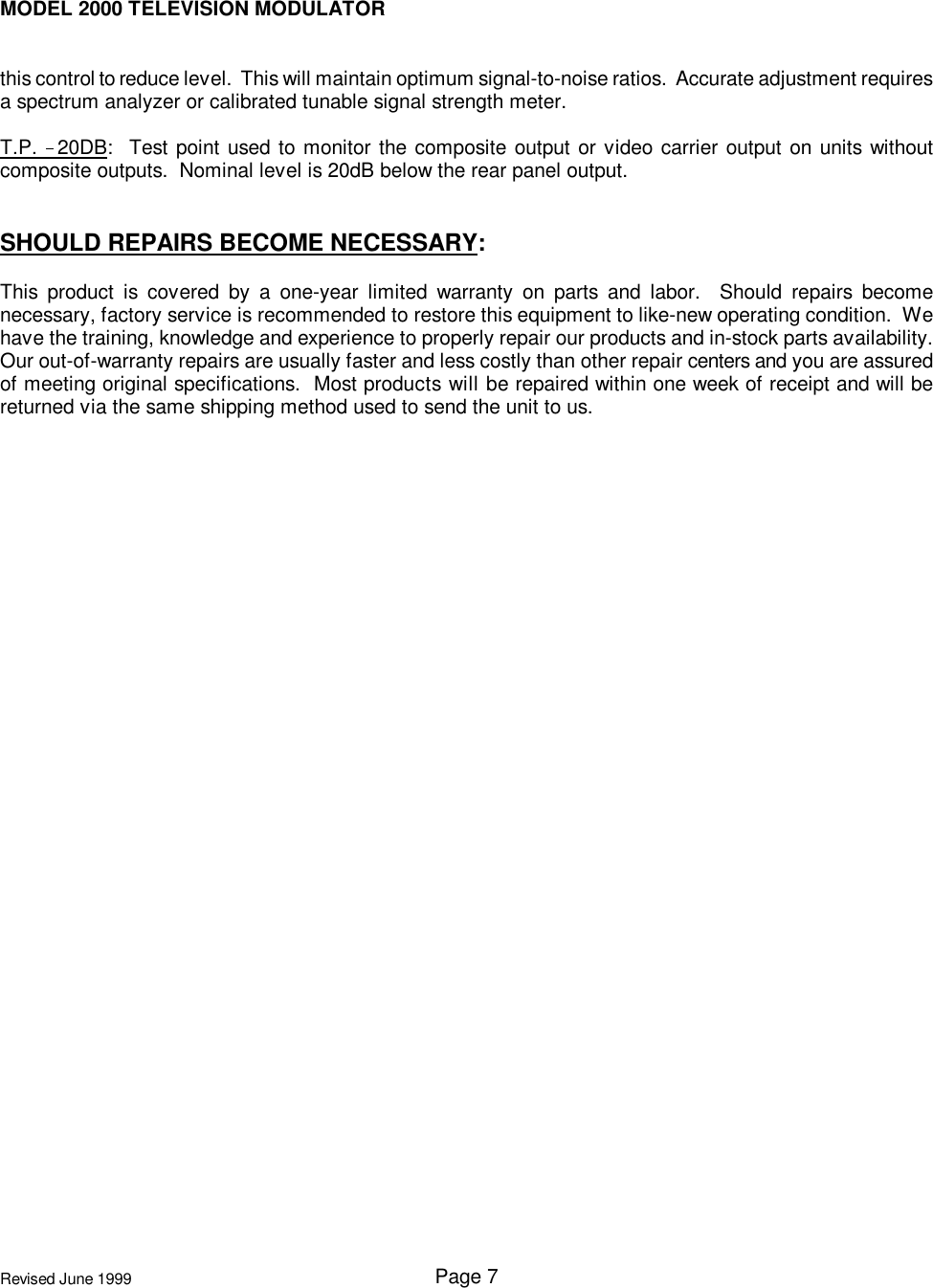EMCEE Broadcast TTU500FA UHF LPTV Transmitter User Manual RF Communications 2000 Modulator Manual Cover wpd
EMCEE Broadcast Products UHF LPTV Transmitter RF Communications 2000 Modulator Manual Cover wpd
Contents
- 1. TTU500FA Users Manual
- 2. RF Commmunications Model 2000 Modulator Manual
RF Commmunications Model 2000 Modulator Manual
